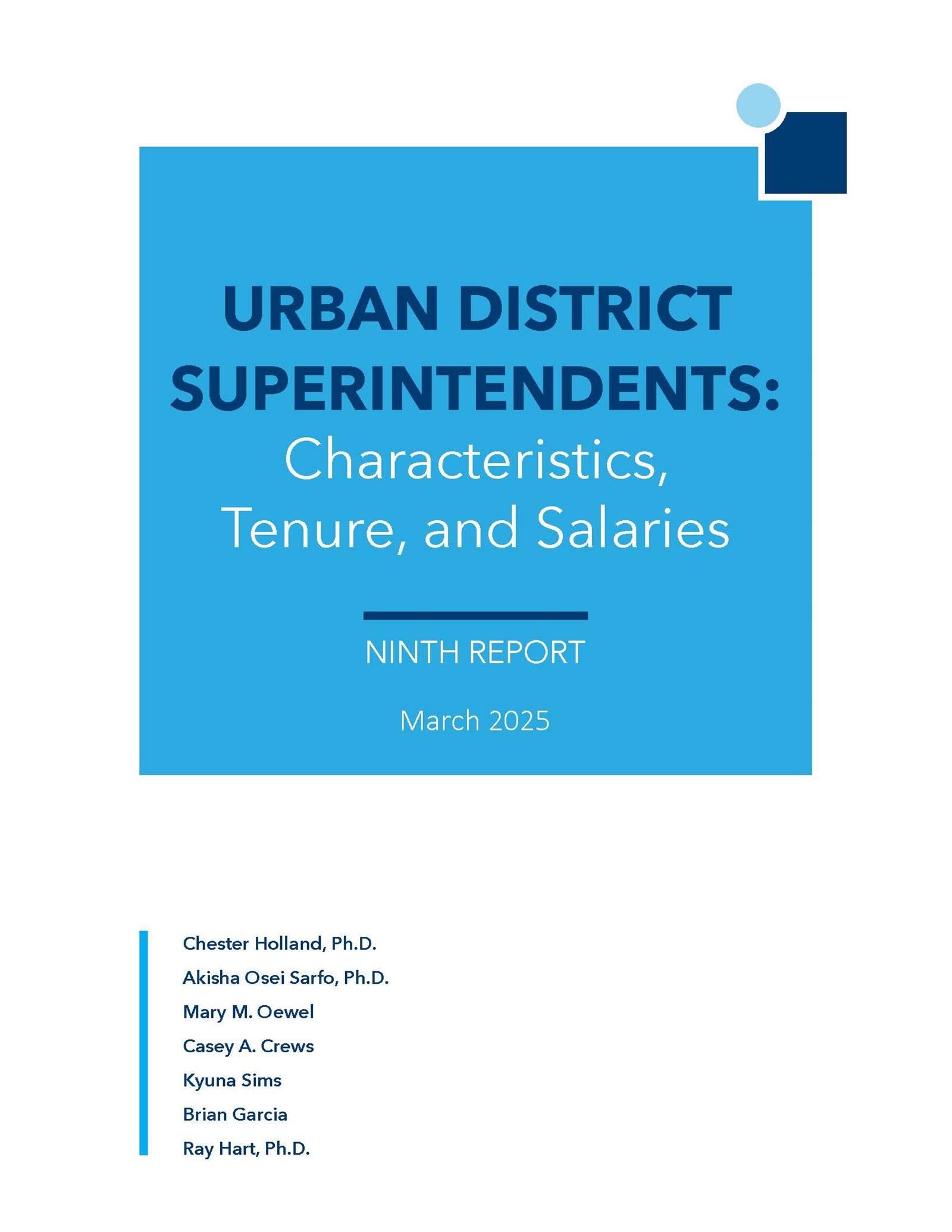- Council of the Great City Schools
- New Report Finds Current Urban Superintendents Are Relatively New to Their Roles
Digital Urban Educator - April 2025
Page Navigation
- CNN Congressional Correspondent Shares Insights from Capitol Hill with Urban Educators
- Political Commentator Emphasizes the Importance of Leadership
- Former Federal Judge Discusses the Changing U.S. Public Schools Legal Landscape
- New Orleans Names New Leader; Kansas City Superintendent Receives Contract Extension
- New Report Finds Current Urban Superintendents Are Relatively New to Their Roles
- School Bonds Pass in Kansas City and Anchorage
- Federally Funded Tutoring Program Credited for Getting Guilford County Schools Students on Track
- Legislative Column
New Report Finds Current Urban Superintendents Are Relatively New to Their Roles
-
A recent study conducted by the Council of the Great City Schools shows that superintendents currently leading the largest urban public school districts have not had the same longevity as their immediate predecessors.
Titled Urban District Superintendents: Characteristics, Tenure, and Salaries, the report analyzed the demographic characteristics of urban school district superintendents from 2018-19 to 2022-23 and provided historical comparison to previous Council reports.

According to the survey, permanent superintendents immediately preceding the currently serving district leaders averaged 4.9 years on the job, while currently serving district leaders have an average tenure of 2.7 years. This reflects the significant turnover in district leadership that occurred in the wake of the pandemic.
The report found that Black men (23%) represent the largest demographic among Council district superintendents, while Hispanic women (4%) remain significantly underrepresented among Council district leaders.
Council district leaders heading systems with more than 100,000 enrolled students had higher average salaries before and after the pandemic. In addition, the study found that increases in student population correlate with increases in district leader pay both before and after the pandemic. This was the case even after adjustments were made for cost-of-living differences.
The study also revealed that the smallest urban districts have the longest tenures for their current superintendents, while the largest districts experience the shortest current tenures.
One of the most promising findings from the report is that the demographics of superintendents are increasingly reflecting the student populations they serve. Currently, 65 percent of urban superintendents are Black or Hispanic. Between 2003 and 2023, the study shows that Black Female superintendent representation increase nine (9) percentage points compared to a six (6) percentage point increase for Hispanic Males, a four (4) percentage point increase for White and Hispanic Females, a three (3) percentage point increase for Black Males, and a 28 percentage point decline for White Males.
"Although we have made progress in diversifying leadership to more accurately reflect the student population we serve, there is still work to be done to ensure sustained and stable leadership within our districts," said Council Executive Director Ray Hart. "While it is unclear whether the noticeable differences will remain, the shorter tenures of currently serving superintendents and the rising rates of turnover in urban superintendents following the pandemic represent what could be a critical issue in educational leadership, impacting the stability and effectiveness of urban school districts."
The new report is the ninth conducted by the Council examining the characteristics, tenure, and salary of urban school district superintendents.
Media Contact:
Contact Name
Contact@email.com
(000) 000-0000
Contact Name
Contact@email.com
(000) 000-0000
Contact Name
Contact@email.com
(000) 000-0000
Media Contact:
Contact Name
Contact@email.com
(000) 000-0000
Contact Name
Contact@email.com
(000) 000-0000
Contact Name
Contact@email.com
(000) 000-0000


